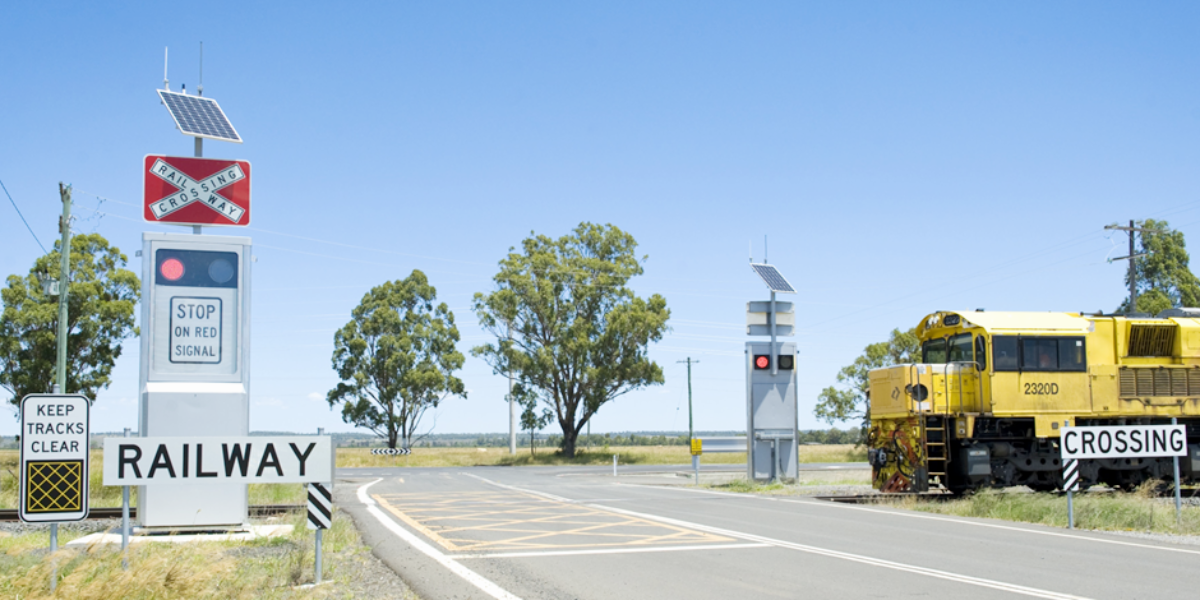Callaghans Lane Level Crossing near Quirindi has been chosen as the site for a $1.2 million trial of digital technology designed to improve level crossing safety in rural and regional areas.
As few as one in five (22 per cent) of drivers are stopping at regional passive level crossings, like the one at Callaghans Lane. This is the very same crossing where a 77 year old man lost his life after his ute was struck by the northbound Xplorer last year, leaving passengers confused and in shock, stuck on the train for five hours.
This will be the first trial in NSW of the Rail Active Crossing System (RAXS), which is a modular low-cost solution that uses wireless train-activated technology. The passive crossing at Callaghans Lane will effectively become an active site with flashing lights at the crossing and advance warning signage on the road, triggered by an approaching train to alert motorists.
The Callaghans Lane crossing was selected because it met several criteria for a suitable site, including its fatal crash history, for a trial on the rail network managed by the Australian Rail Track Corporation (ARTC).
The NSW Government is providing $715,000 funding for the trial, along with $500,000 from the Australian Government’s Level Crossing Safety Research and Innovation Grants – a component of the Regional Australia Level Crossing Safety Program.
Transport for NSW will run the trial in partnership with ARTC and technology company Rail Safety Systems, which designed the RAXS.
The system is solar-powered, wireless and a modular design, can be quickly and cost-effectively installed, and needs less maintenance, potentially overcoming some of the barriers to getting more activated level crossings in regional and remote Australia.
In the rare event of a system disruption, it automatically enters ‘stop sign’ mode, and becomes like a passive crossing – with motorists having to obey the stop sign rules. This compares to existing active level crossings, which activate warning bells and lights until maintenance crews arrive.
“Our RAXS technology not only enhances visibility and reliability but also drastically reduces installation costs and time, which we believe make it a game-changer for rural and remote crossings,” Rail Safety Systems Business Development Lead Andy Turnbull said.
“Some of the standout features of this system are a fail-to-safe design which ensures that in the event of a system failure or power loss, the level crossing automatically shifts to a traditional STOP sign mode and a central Remote Crossing Management System that ensures real-time monitoring and rapid response to any faults.
If successful, the trial of RAXS technology could make activating more regional level crossings more affordable and rolled out more quickly. Up to three sites could be upgraded for the cost of traditional level crossing treatments.
“What is so innovative about the RAXS trial is that it is designed specifically for regional and rural areas and effectively turns a passive crossing into an active one and I look forward to seeing the outcome of this trial at Callaghans Lane near Quirindi,” NSW Minister for Regional Transport and Roads Jenny Aitchison said.
Member for Tamworth Kevin Anderson recently met with concerned community members following the tragic death of their neighbour, and thanked the Minister for her quick response to the issue.
“Following a tragic fatal accident, the local community contacted me deeply concerned about the safety of their crossing, with limited visibility and a growing number of vehicles using the road.
“That’s why, I immediately took the issue to the Minister for Regional Transport and Roads requesting that an urgent upgrade be put in place to warn those who use the crossing regularly.
“Any death on a level rail crossing is a tragedy for families and local communities and we need to do everything we can to make rail crossings safer,” Mr Anderson said.
Local roadworks and installation of the first parts of the RAXS technology are due to take place at Callaghans Lane level crossing in the coming months, followed by rigorous testing ahead of a planned go live date mid next year.
The Federal Infrastructure, Transport, Regional Development and Local Government Minister Catherine King said any death on a level crossing is a tragedy.
“With more than 2,700 level crossings in NSW, we need to do all we can to prevent further loss of life, particularly in the regions where level crossing fatalities predominantly occur.
“Through the Regional Australia Level Crossing Safety Program, we are investing a total of $180 million towards level crossing safety initiatives, from infrastructure upgrades such as boom gates through to other innovative technologies and data,” she said.
“I know regional communities, and particularly those who have lost loved ones at level crossings, are eagerly awaiting new safety trials such as this, and I can assure them, the Australian and NSW Governments are taking action to improve level crossings.”
Something going on in your part of the region you think people should know about? Send us a news tip or email newsdesk@netimes.com.au.

